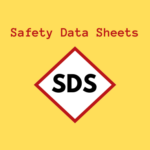A Guide to Choosing the Right Incident Management Software Solution

Incidents are an unavoidable reality in the constantly changing field of business operations. Whether it’s a security breach, an equipment loss, or a service disruption, effective incident management is critical for minimizing downtime and ensuring smooth operations. Central to this management is selecting the right incident management software solution. However, with many options available, finding the perfect fit for your business can be overwhelming. In this comprehensive guide, we’ll explore the key factors to consider when selecting the ideal incident management software solution tailored to meet your organization’s unique needs.
1. Identify Your Requirements
Before diving into the vast sea of incident management software options, it’s essential to identify your organization’s specific requirements. Start by assessing your current incident management processes, understanding the types of incidents you encounter, and determining the size and structure of your incident response team. Consider factors such as:
• The volume and complexity of incidents you handle.
• Integration needs with other tools and systems.
• Compliance requirements (e.g., ISO 14001, OSHA).
• Reporting and analytics capabilities.
• Scalability for future growth.
Having a clear understanding of your requirements will help narrow down your options and ensure that the chosen solution aligns with your organization’s needs.
2. Define Key Features
Next, define the key features and functionalities that are essential for your incident management process. While basic features such as incident tracking, categorization, and assignment are standard, consider additional features that can enhance your incident workflow, such as:
• Automated alerting and notification
• Customizable incident response workflows
• Ability to track near misses (incidents with potential harm), and hazards (unsafe conditions that may cause incidents).
• Integration with other software solutions
• Knowledge base and documentation management
• Real-time reporting and analytics dashboards
By prioritizing features based on your organization’s needs, you can focus on solutions that offer the most value and functionality.
3. Evaluate Ease of Use
Usability is a critical factor when selecting any software. The software solution should be intuitive and easy for your team to use, with a user-friendly interface that minimizes the learning curve. Complex interfaces can delay adoption and slow down incident resolution, so look for solutions that prioritize simplicity and efficiency.
4. Explore Integration Capabilities
Effective incident management often involves collaboration across multiple teams and modules. Therefore, it’s essential to choose a software solution that seamlessly integrates with your existing tools and workflows. Whether it’s integration with QMs solutions, collaboration modules, or communication tools, ensure that the chosen solution can offer such functionalities helping you to achieve an effective incident management process.
5. Look for Customization Options
Every organization has unique incident management processes and workflows depending on the type of incident they encounter. Look for software solutions that offer customization options, allowing you to tailor the platform to your specific needs. This includes customizable forms, workflows, notification templates, and reporting dashboards, ensuring that the software adapts to your business requirements rather than the other way around.
Additionally, look deeper into the customization procedure and pick the software that offers an easy-to-use customization tool that would not cost you time and effort while customizing it.
6. Consider Scalability and Performance
As your business grows and evolves, so will your incident management needs. Choose a software solution that is scalable and can grow with your organization, accommodating an increasing volume of incidents, users, and data without compromising performance. Scalability ensures that your incident management processes remain efficient and effective, even as your business expands. Moreover, look for a solution that constantly offers new features and take into consideration your feedback after using it. This ensures you keep on track with the latest trends and practices in the incident management processes.
7. Ensure Security and Compliance
Security is essential when it comes to incident management, especially when handling sensitive or confidential information. Ensure that the chosen software solution prioritizes security, with robust features such as role-based access control, audit logs, and compliance with relevant standards and regulations. This includes compliance with data protection regulations such as ISO 27001, ensuring that your incident management processes are both effective and secure. Also, ensure the software allows seamless reporting to regulatory agencies like OSHA, and EHS enabling compliance with workplace safety standards and regulations.
These regulations set standards for workplace safety and health, and adherence to them is essential for ensuring legal compliance and employee well-being.
8. Research Vendor Reputation and Support
Finally, consider the reputation and reliability of the software vendor. Research customer reviews, testimonials, and case studies to assess the vendor’s track record and customer satisfaction levels. Additionally, evaluate the vendor’s support services, including response times, availability, and ongoing support and maintenance offerings. Choosing a reputable vendor with a strong track record can provide peace of mind and ensure a smooth implementation and ongoing support experience.
Conclusion:
Selecting the right incident management software solution requires careful consideration of your organization’s requirements. The market may offer vast options, but little can satisfy all your requirements. Trackmedium QMS provides an effective, powerful, and reliable software solution for managing incidents and accidents. The Incident and Accident Management module optimizes your incident response procedures and empowers your team to react promptly, make well-informed decisions, and align seamlessly with your company’s growth.
Choose a software solution that streamlines your incident management processes, enhances collaboration, and ensures business continuity in the face of any challenge like the incident solution provided by Trackmedium QMS.
Image by pch.vector on Freepik


















